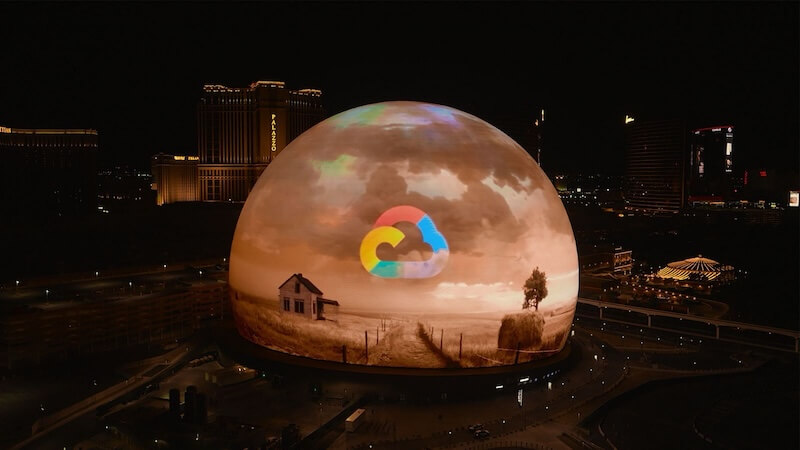Google is leveraging its cutting-edge artificial intelligence to reimagine "The Wizard of Oz" for an immersive experience at the Las Vegas Sphere, heralding a new era in entertainment. This collaboration between Google Cloud, Sphere Entertainment, Magnopus, and Warner Bros. Discovery aims to transform the classic story using advanced AI and an advanced computing infrastructure. The reimagined "Wizard of Oz" is scheduled to premiere at the Sphere on August 28, 2025.
This project represents the future of visual storytelling, blending Google's sophisticated AI models with the Sphere's groundbreaking venue. The Sphere, built in partnership with the Madison Square Garden and Las Vegas Sands Corporation, is considered the world's largest spherical structure and the most technologically advanced stadium in the United States to date. Its bowl-shaped theater contains the world's highest-resolution wraparound LED screen, measuring 160,000 square feet. The screen stretches from ground level to 250 feet high, wrapping around the venue to showcase animation or close-up action. The venue can seat 17,600 people. Each seat has its own haptic system and personal Wi-Fi/Hi-Speed Internet. The haptic seats provide an immersive experience, matching the event with vibrations and 4D machines that simulate wind, temperature, and scent effects. Over 160,000 speakers are spread around the bowl to deliver pristine sound to every seat.
At the heart of "The Wizard of Oz" at Sphere are Google Cloud's AI technologies, including the Gemini models, Veo 2, and Imagen 3. These tools will intelligently enhance the film, boosting resolution, extending scenes, and even allowing digital characters to interact in ways never before possible. Google trained its generative AI models, Gemini and Veo, on archived footage, shooting scripts, set photographs, and musical scores. Google then used Imagen 3 to upscale the film's resolution, extend backgrounds, and include characters who originally did not appear on screen. According to Google Cloud, over 90% of the film is AI-enhanced, with The Sphere adding sensory effects like wind, heat, and scent to deepen the experience.
The original "Wizard of Oz" film revolutionized the entertainment industry in 1939 with its use of Technicolor. Now, nearly a century later, "The Wizard of Oz" at Sphere aims to redefine visual experiences again through AI and immersive technology. The project involves first-of-its-kind engineering work and thousands of creators, coders, and VFX artists. Sphere is using Google Cloud's scalable and AI-optimized infrastructure to support the massive data and computational demands in building its immersive experiences. The Wizard of Oz at Sphere has processed 1.2 petabytes of data to date.
Google's AI tools address the limitations of the original 4:3 film format, which couldn't simply be stretched onto the Sphere's massive 16K screen. Google used generative AI models from its Gemini family, most notably Veo 2 and Imagen 3. The company not only had to magnify the original 35mm film for a 160,000-square-foot screen composed of 16,000 LEDs but also had to account for camera cuts that removed characters from the frame. It did so primarily through an AI super-resolution tool (generating new pixels to fit the much higher-res screen), AI outpainting (generating new parts of a scene stretching beyond the original celluloid), and performance generation (incorporating composites of the actors into these expanded environments). To help fine-tune the AI models, Google didn't limit the models' training to the original footage. It also fed them supplementary material like the shooting script, production illustrations, photographs, set plans, and scores — teaching them about characters' and environmental details and production elements like camera focal lengths.
This collaboration between AI experts and creative visionaries is a model for the future, demonstrating how technology can transform storytelling in ways that were once unimaginable. This isn't just watching a movie; it's stepping inside it.















